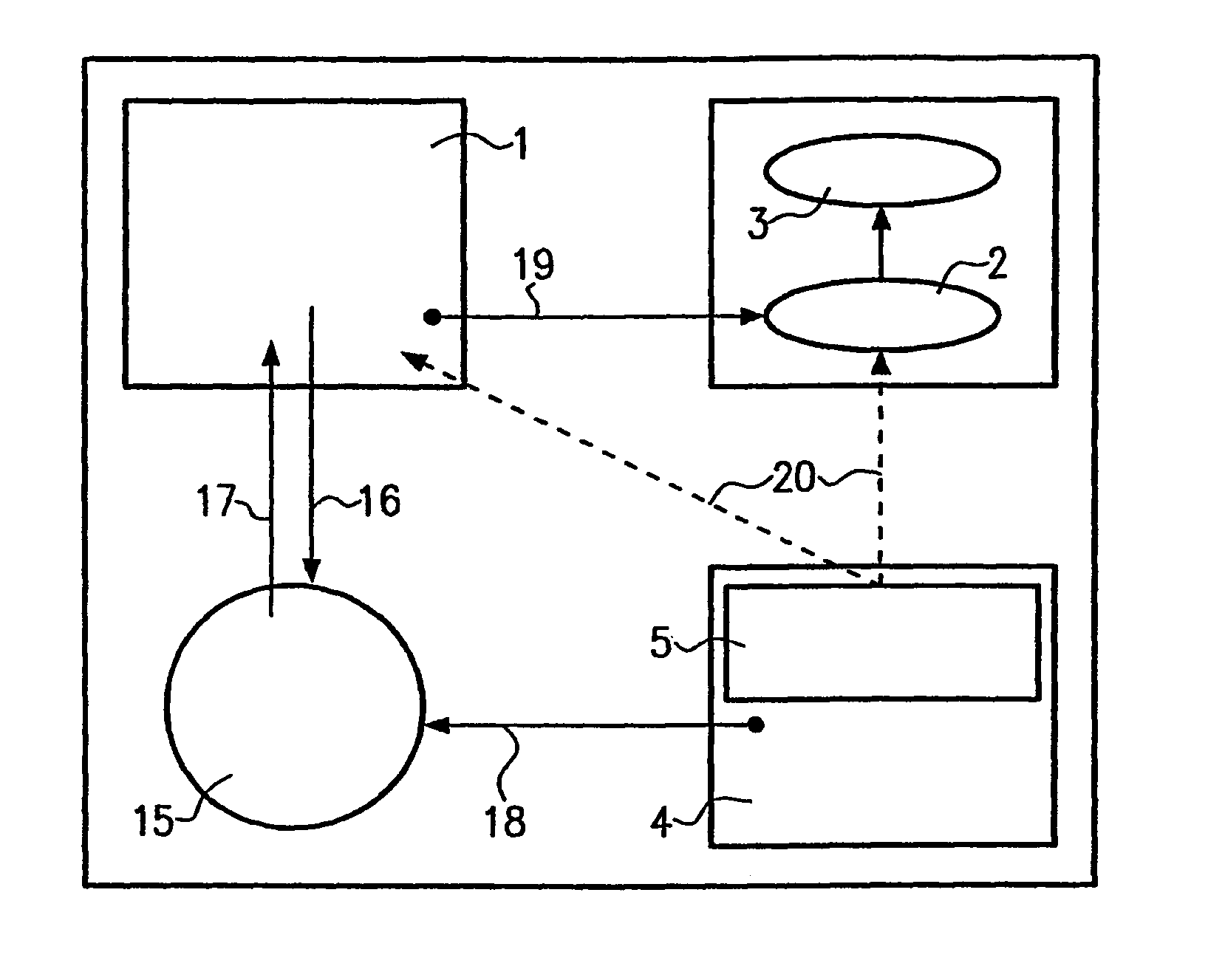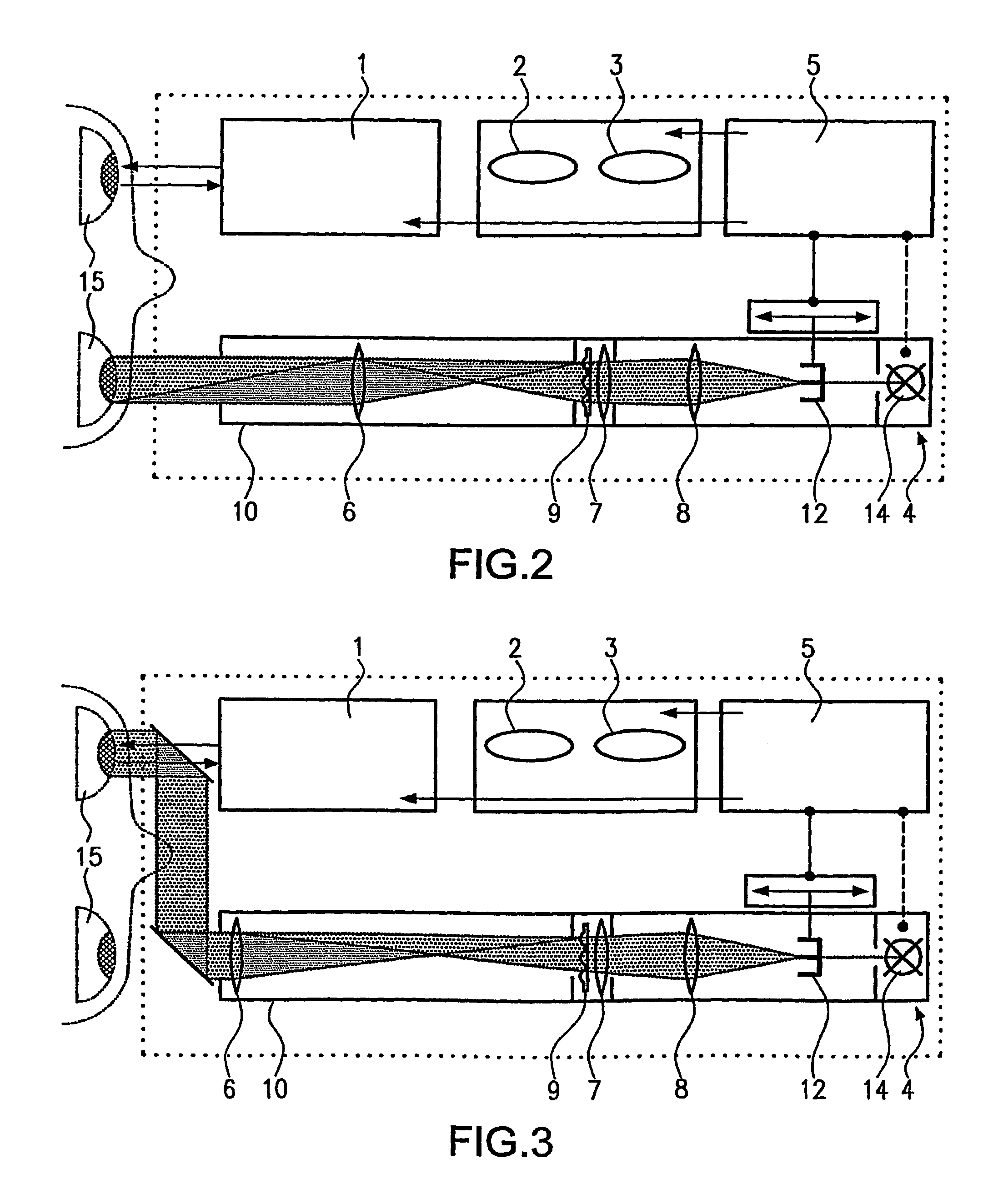Method, device and arrangement for measuring the dynamic behavior of an optical system
- Summary
- Abstract
- Description
- Claims
- Application Information
AI Technical Summary
Benefits of technology
Problems solved by technology
Method used
Image
Examples
Embodiment Construction
[0031]Reference is first made to FIG. 1, which is a schematic diagram of a device and the associated method sequence for dynamic stimulation and dynamic measurement of the aberrometry of an eye 15. The Figure shows the individual components and their operative connection. The device includes a unit for measuring the wavefront / aberrometry of eye 15, the unit being able to measure either both eyes at the same time or one eye at a time. In the latter case, the eye that is currently not being measured, may either look with an unrestricted view past the unit, or also look into the unit. For the sake of simplicity, the unit for measuring the wavefront / aberrometry of an eye will be referred to as “aberrometer 1” hereinafter. Aberrometer 1 emits measurement light 16 into eye 15, and the eye returns signal light 17. Measurement light 16 and signal light 17 are indicated by arrows in FIG. 1. The device further includes a device for dynamic data acquisition 2 which receives raw data 19 of aber...
PUM
 Login to View More
Login to View More Abstract
Description
Claims
Application Information
 Login to View More
Login to View More - R&D
- Intellectual Property
- Life Sciences
- Materials
- Tech Scout
- Unparalleled Data Quality
- Higher Quality Content
- 60% Fewer Hallucinations
Browse by: Latest US Patents, China's latest patents, Technical Efficacy Thesaurus, Application Domain, Technology Topic, Popular Technical Reports.
© 2025 PatSnap. All rights reserved.Legal|Privacy policy|Modern Slavery Act Transparency Statement|Sitemap|About US| Contact US: help@patsnap.com



